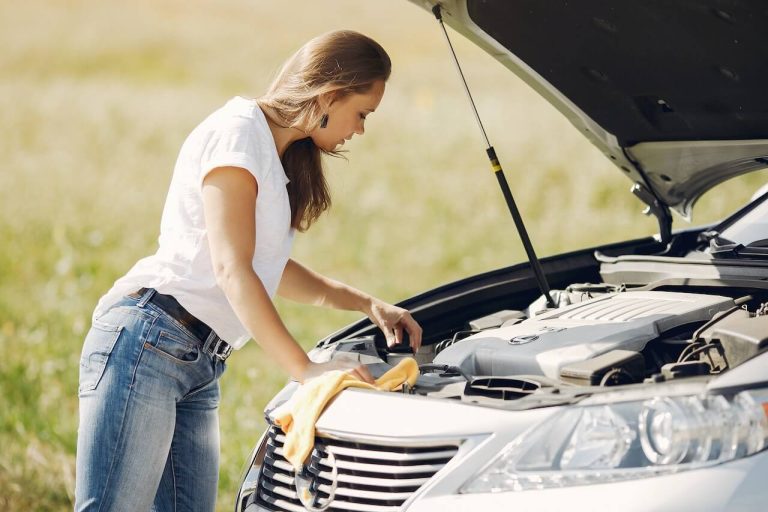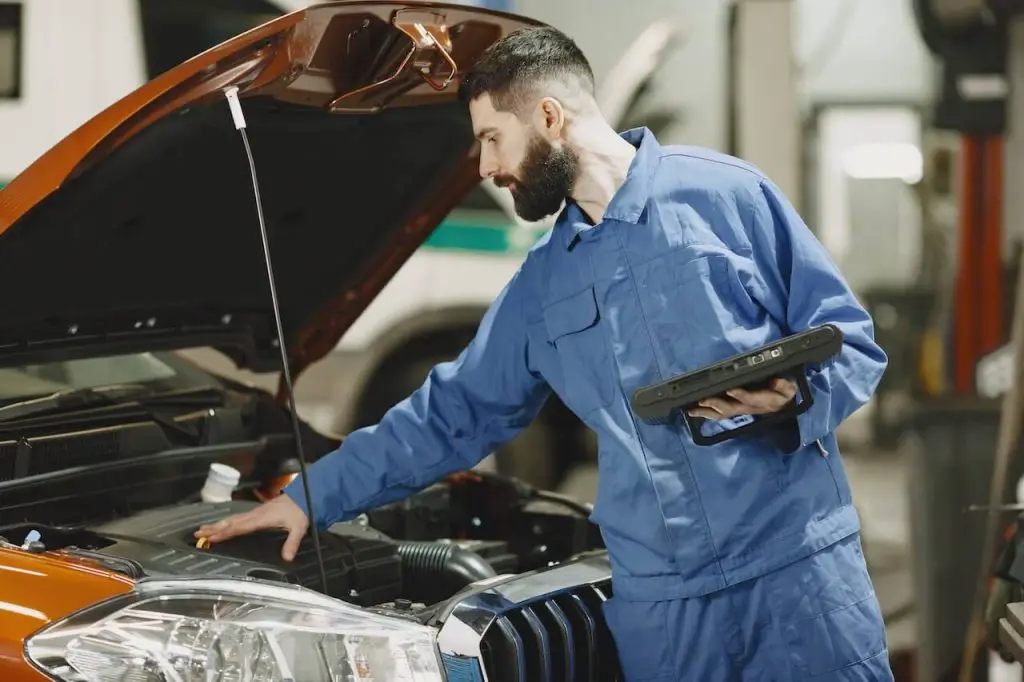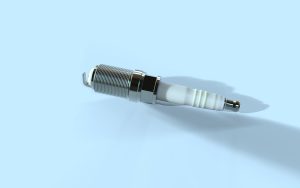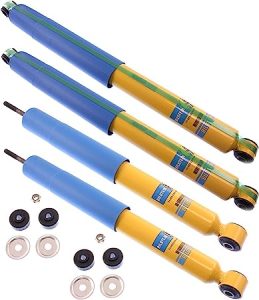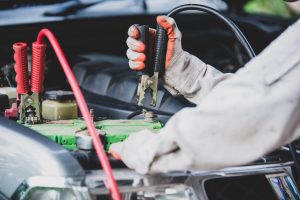Keeping your car engine healthy is essential for its functioning. Without proper care, your engine could easily overheat and cause costly repairs. You are in a hurry, want a quick repair, and the engine is still hot. So, the question arises how long does it take for a car to cool down?
The answer is not so straightforward; it varies based on the type of vehicle, recent usage, and other external conditions. This article will give you a comprehensive understanding of how long does it take for a car to cool down. Here, we’ll also provide multiple approaches that can help expedite this process! That way, you can hit the road with confidence!
Table of Contents
ToggleA Quick Course on Internal Combustion Engines in car
Grasping the basics of an internal combustion engine is immensely advantageous for any car enthusiast. Not only will you be able to comprehend how your car runs, but also how much fuel it consumes and how long does it take for a car to cool down after a drive. Furthermore, understanding this influential component can even allow one to recognize faster acceleration rates! Internal combustion engines convert energy produced by burning gasoline into mechanical motion. This energy has heat and mechanical power, propelling the car forward along with other exhaust fumes.
Internal combustion engines rely on several components working in tandem – pistons, crankshaft, spark plugs, fuel tank, and radiator – to ensure optimal temperature while running. Understanding how they interact with each other is integral for making informed decisions regarding your car’s maintenance and performance; you’ll be able to time your vehicle’s cooling after a drive.
Causes of Car Engine Overheating
Friction between the engine’s moving parts generates heat, which increases intensity as it continues to run. Without prompt dissipation of this hot air, an excessive amount can cause catastrophic overheating. Some other potential causes of overheating in a car engine include:
Lack of Coolant
Without enough coolant, your engine will experience a worrisome rise in temperature – this is one of the most frequent factors behind an overheating motor. Coolant ensures that your vehicle’s engine remains at its intended heat level, so when it’s not present or isn’t sufficient, you’ll probably be experiencing more than just car trouble. You can check your coolant level by looking at the overflow tank under your hood. Increase the level of liquid until it reaches the “full” marker if it is currently low.
Radiator Leaks
Another reason for an overheating engine is a radiator leak. Your radiator is the key to your engine’s temperature regulation, so if it gets a leak, all of that coolant will disappear and leave you with an overheating issue. You can easily tell whether or not your car has a radiator leak by looking for wet spots underneath it or examining the actual unit itself for any signs of cracks or leaks.
Thermostat Issues
The thermostat is responsible for signaling the radiator when to move the coolant and when to stop. Malfunctioning thermostats can cause your engine to overheat, leaving you with indicators such as a slow warm-up or an erratic temperature gauge on your dashboard. If any of these incidents occur, assessing whether your car has a faulty thermostat is prudent.
Fan Problems
The fan helps to circulate the coolant so that your engine doesn’t overheat. Typically, if something gets stuck in the fan, one of its blades will become damaged and break off. If this occurs, you may detect a loud clang from the engine compartment or perceive smoke emerging from your motor bay. To keep things running smoothly, regularly inspect your fan for any potential problems!
Clogged Hoses
If the hoses that carry coolant to and from the radiator become clogged, it can cause your engine to overheat. Over time, deposits from the coolant can build up and restrict flow, so it’s essential to have them flushed and replaced regularly as part of routine maintenance. You’ll know there’s an issue with the hoses if you see coolant leaking from them or if they feel stiff or brittle when you touch them.
Head Gasket Failure
In severe cases, an overheating engine can be caused by head gasket failure. The head gasket sits between the cylinder head and blocks and seals in all of the fluids and gases that power your car, so if it fails, those fluids and gases will escape and cause severe damage to your engine. Head gasket failure is usually caused by excessive heat or pressure, so it’s essential to have your car checked out immediately if you think this might be an issue.
How Long Does a Car Engine Take to Cool Down?
How long it takes for a car engine to cool down varies based on several different factors. These include how hot it is when you stop, the temperature outside, as well as your vehicle’s cooling system. On warm days or in higher temperatures, it can take longer for an engine to become completely cooled down. To be safe, allow thirty minutes up to an hour after ceasing driving before opening your hood and inspecting/working on the motor beneath. This time should allow your engine to become cool enough that you don’t risk any potential burns.
Also Read: Car Overheating Then Going Back To Normal
Strategies to Speed Up Cool-Down Time
No one likes waiting around for their car engine to cool down. Waiting for your engine to cool down can be a bane of existence. But fortunately, there are some reliable tactics you can employ to expedite the process! Let’s take a peek at these strategies:
Use coolant
If you have coolant available, pour it into the radiator. Coolant will help dissipate heat more quickly and bring the temperature of the engine down faster. Just be sure not to overfill the radiator—you should always consult your car’s owner’s manual before adding any fluids.
Turn on the heater
This may seem counterintuitive, but turning on the heater will help draw heat away from the engine and into the car’s cabin. So if you’re in a pinch and need to cool down your engine quickly, turn on that heater!
Turn on the Fans
To reduce the cooling time of your vehicle’s engine, power on both fans. Most automobiles include two fans: for the motor and radiator, respectively. By running both at once, you can expedite the chill-off rate significantly more than if only one was activated.
Check the thermostat
The thermostat regulates the flow of coolant through the engine. If the thermostat is jammed in a closed position, no coolant will reach your engine, leading to overheating. To identify if this is an issue, start your car and let it idle for several minutes. If your temperature gauge does not move during that time or remains stagnant, then it’s likely caused by a malfunctioning thermostat.
Drive slowly
If your engine is already running hot, you must ease off the accelerator and drive slowly until you can pull over in a safe place. Pushing too hard accelerates the heat, which could lead to significant damage that might be impossible to repair. So take caution – slow down now so that there won’t be any problems later!
Pull over and turn off the engine.
Finding a secure spot to stop is of the utmost importance. Make sure you switch off your engine and lift open the hood so air can circulate and cool down some heat. Take caution not to touch any hot surfaces -you don’t want those unpleasant burns! It’s best that your engine completely calms down when it overheats, so refrain from hurriedness in getting back on track. Patience is key here!
Also Read: CAR SHUTS OFF WHEN STOPPED OR SLOWING DOWN
Frequently Asked Questions
How long to let car cool down before adding coolant?
It is recommended that you allow your car to cool down for at least 20 minutes before attempting to add coolant or anti-freeze. Ensure the vehicle is off and the engine is cool before refilling or checking the levels of your car’s cooling system.
How long does it take for your car to reach an appropriate temperature to inspect the oil?
For optimal results, it is recommended to wait at least 10 minutes after your car’s engine has been turned off before attempting to check or add oil to the vehicle.
How much can you travel in a vehicle that is overheating?
For maximal security, it’s best not to drive while in this state. If the temperature gauge rises while on the road, pull over in an appropriate area as fast as possible and turn off the engine immediately. Be sure to have any potential issues checked by a mechanic before heading out on future trips with your automobile. With preventive maintenance, you’ll avoid even more costly repairs down the line!
Why does it take so long for a car to cool down?
It takes a while for a car to cool down due to the heat created by the engine and its components during operation. The materials used in the engine and its components take time to dissipate the heat generated in order to reach a safe temperature before any maintenance can begin.
Conclusion
Keeping your car’s engine operating in a cool and efficient manner is entirely within reach. You can turn on the heater and fans or even check out the thermostat to help regulate its temperature. Furthermore, allowing your vehicle some time for it to cool down fully before hitting the road will guarantee that you’re driving with an optimally functioning motor. Remember: take necessary safety precautions and be patient while waiting for cooling – oftentimes, this is key when seeking satisfactory performance levels!

